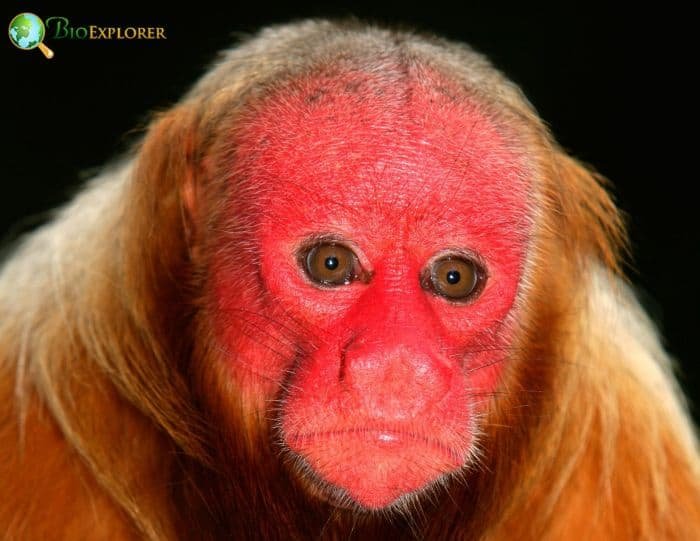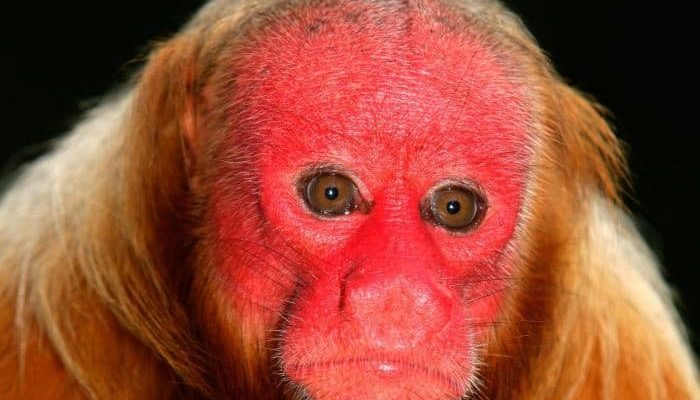
Imagine the uakari as the gourmet chef of the rainforest, carefully selecting its meals from the menu of the jungle. These monkeys have developed specialized diets and hunting techniques that set them apart from other primates. Let’s dive into the delicious world of uakari eating habits and their clever hunting strategies, painted against the backdrop of their beautiful and often challenging habitat.
What Does a Uakari Eat?
Uakaris are primarily frugivores, which means their diet mainly consists of fruits. However, they don’t stop there. These monkeys also munch on leaves, seeds, and sometimes insects. The type of fruit they eat can vary depending on the season. For example, during the rainy season, when the rainforest is bursting with life, uakaris feast on the ripe, juicy fruits that hang from the trees. You might find them snacking on figs or the sugary fruits of the guava plant.
One interesting thing about uakaris is their selection process when it comes to food. They tend to choose fruits that are high in sugar and protein, which provides them with the energy needed to explore their treetop domain. Imagine a buffet of delicious fruit options—wouldn’t you pick the ripest, sweetest ones? Uakaris are no different; their keen eyesight helps them spot the tastiest fruits high above in the canopy.
Here’s a fun fact: their bright red faces are actually an indication of the health of a uakari. The richer the color, the healthier the individual, showing they have access to a good diet. So, if you see a vividly red uakari, you know it’s living the good life!
What Hunting Techniques Do Uakaris Use?
Uakaris aren’t exactly hunters in the traditional sense of stalking and chasing prey. Instead, they forage skillfully. Their hunting strategy is more about navigating their environment to find food rather than hunting down animals. They’ll often travel in groups, which allows them to cover more ground and spot food sources more efficiently.
When they locate a food source, you’ll see them working together. A scouting uakari will venture out to test a tree for ripeness, and if it’s good, the rest of the troop will gather around to enjoy the feast. It’s a team effort that ensures everyone gets a share! Honestly, it’s like a potluck where everyone contributes to the meal.
Their social structure is crucial for foraging. By maintaining close-knit groups, uakaris can share information about the best feeding spots. If one uakari finds a particularly tasty tree, it won’t hesitate to let others know. This sharing of knowledge is part of what keeps the group healthy and well-fed.
Adapting to the Environment
Life in the Amazon is all about adaptation. The uakari has developed some clever traits to help it thrive in this dynamic habitat. One of the most important adaptations is their ability to move swiftly through the treetops. With strong limbs and a keen sense of balance, uakaris can navigate the dense foliage with ease, helping them reach food sources that are otherwise out of reach for many animals.
Another interesting adaptation is their vocal communication. Uakaris make a variety of sounds to communicate with each other. When foraging, their calls help keep the troop cohesive and alert to possible dangers. Imagine being in a crowded café and knowing your friends are there just by the sound of their laughter. That’s how uakaris stay connected while hunting for food.
The ability to cope with seasonal changes also plays a significant role in their survival. During times when food is scarce, they’ve shown impressive flexibility in their diet. Uakaris will shift from their primary fruit sources to alternative foods, such as leaves or flowers, ensuring they can always find something to eat.
Social Dynamics and Foraging
Social behavior is at the heart of how uakaris forage for food. These monkeys tend to live in groups of about 5 to 30 individuals. You can think of it as one big family gathering, where everyone looks out for each other while ensuring they get their share of the fruits of the jungle.
Within these groups, there’s a hierarchy, and more dominant members may get first choice at the best food sources. But here’s the thing—while that hierarchy exists, cooperation is essential for finding food. Less dominant uakaris aren’t completely left out; they often take advantage of the cover provided by the group, allowing them to reach high-up fruits and navigate more difficult areas.
You might be wondering if this social structure impacts their diet. Absolutely! Group dynamics and social bonds influence their foraging behavior, with individuals often sharing food with each other. This cooperative sharing fosters a strong sense of community and helps ensure the overall health of the group.
Conservation Challenges Faced by Uakaris
Sadly, uakaris face significant threats, primarily due to habitat loss. The Amazon rainforest is being cut down at alarming rates for logging and agricultural expansion. As their home shrinks, so do their food sources. This presents a real challenge for these adorable primates. Imagine living in a bustling city where your favorite restaurants keep closing down—that’s the reality for uakaris as the forests disappear.
Moreover, their specialized diet makes them particularly vulnerable. If the trees that produce their preferred fruits are gone, they can struggle to adapt quickly. Conservation efforts are crucial to protect their habitat and food sources. Various organizations work tirelessly to raise awareness about the plight of these unique monkeys and what can be done to help them thrive.
It’s also essential for locals and visitors alike to respect the rainforest. Sustainable tourism, for example, can help provide economic support while preserving the environment. By enjoying what the Amazon has to offer responsibly, we can all contribute to the effort of keeping habitats safe for uakaris and countless other species.
The uakari is more than just a quirky-looking primate; it plays a vital role in the Amazon rainforest. Through its specialized diet and unique hunting strategies, this monkey helps ensure the healthy growth of its ecosystem. By foraging for fruits and helping to disperse seeds, uakaris contribute to the regeneration of plants and trees, maintaining the lush environment they depend on.
As we learn more about the diet and hunting strategies of the uakari, it becomes clear how interconnected life in the rainforest really is. Protecting this incredible animal means protecting its habitat and all the beauty that comes with it. It’s a reminder that every creature, no matter how small, has a part to play in our planet’s grand tapestry. So next time you think of the uakari, picture not just its vibrant red face, but all the life that thrives alongside it in the exquisite Amazon rainforest.

